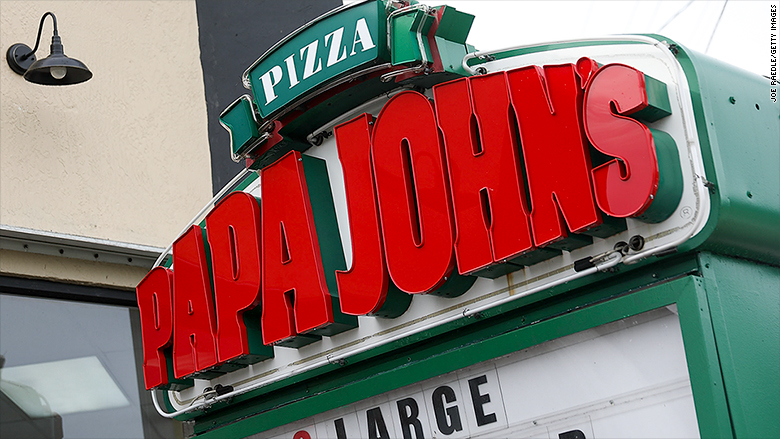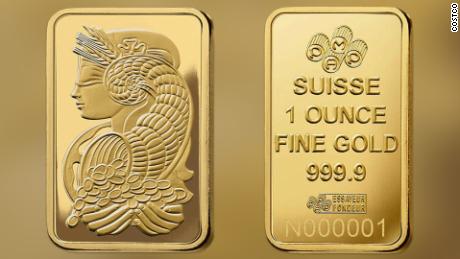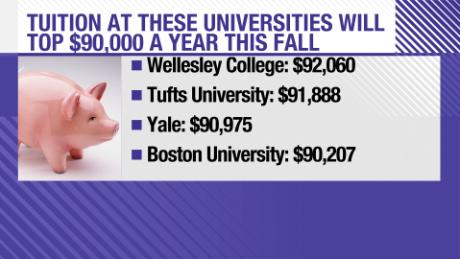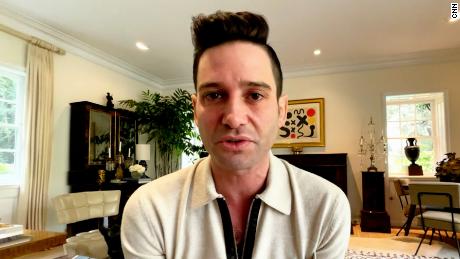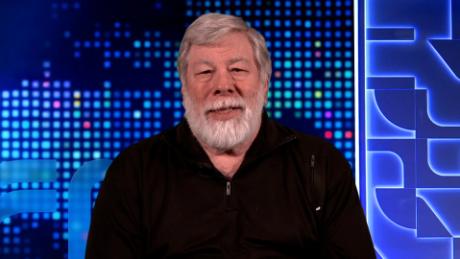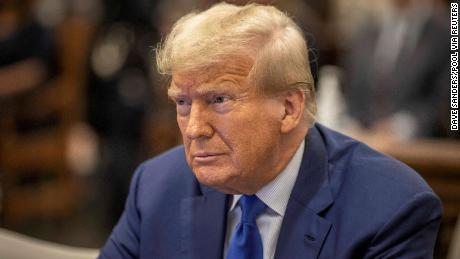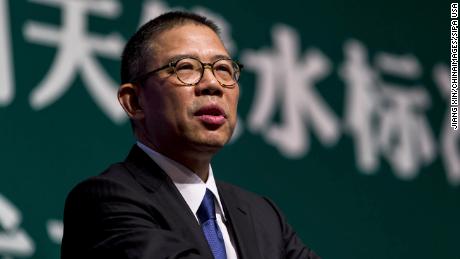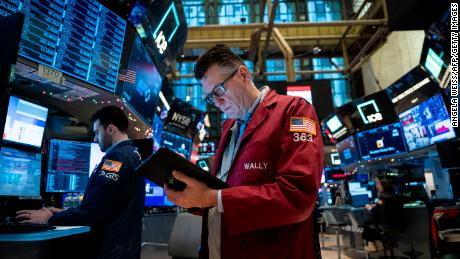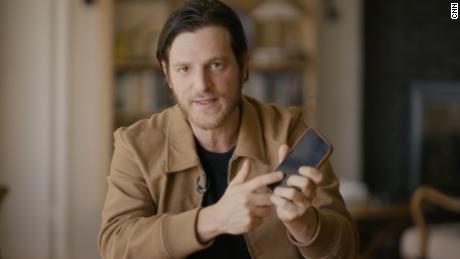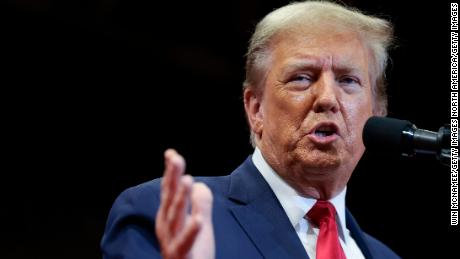Papa John's lost a year. Now it's ready to stage a comeback
Updated 1329 GMT (2129 HKT) April 4, 2019
New York (CNN Business)Until late 2017, Papa John's was thriving.
Customers liked the brand, and the company was enjoying 14 straight years of positive or flat growth. It had plans to roll out digital innovations and continue to win over new customers.
But then things took a turn. During a call with analysts in November that year, founder and then-CEO John Schnatter controversially blamed slowing ŌĆö but still positive ŌĆö sales on the NFL leadership's handling of athlete protests. After that, sales fell. The following summer, news broke that Schnatter had used the N-word on a conference call. By July, Schnatter, the original "Papa John," was out as both CEO and chairman of the company's board.
From that summer until March 2019, when the company reached a settlement deal with Schnatter, Papa John's (PZZA) desperately tried to distance itself from the founder while he lobbed repeated, pointed attacks at the company.
Papa John's spent much of that 14-month period dealing with the fallout, which became an unfortunate distraction for top managers. They could have used the time, instead, to focus on improving the business and planning for the future.
2018 was a "challenging year," CEO Steve Ritchie told CNN Business. "This is a team that's used to winning."
The company had to adjust to "not creating success," he said. Its sales fell for five straight quarters, including the most recent one. While Papa John's was losing sales and scrambling to staunch its growing PR crisis, its competitors were charging ahead with tech stunts and value deals.
It's "not a time to be losing ground," said Morningstar analyst R.J. Hottovy. In such a competitive sector, "one or two lost years can be very difficult" for a company to overcome.
But Papa John's, armed with a hefty investment from a hedge fund, a change in leadership and a renewed focus on quality pizza, is planning a rebound. It's not going to be easy.
The downfall
Even before Papa John's had a public relations crisis on its hands, its sales were slipping.
In fall 2017, the company reported that sales at North American stores open at least a year ŌĆö a key metric known as same-store sales ŌĆö grew just 1% in the three-month period from July through September, compared to the same period in 2016. In the previous quarter, that figure was 1.4%, and it was 2% in the one before that. While Schnatter blamed the NFL, Ritchie ŌĆö then the company's president and chief operating officer ŌĆö told a more complicated story. Ritchie mentioned the NFL when explaining the slowdown, but he also said that bad weather, which temporarily closed some stores, and a competitive environment suppressed sales.
At the time, the company said that investments in technology, including a "complete redesign of our entire digital platform," could help it compete.
But by the following quarter, after Schnatter's controversial comment, the company's financial situation further deteriorated. North American sales fell 3.9% over a year earlier, dragged down by "negative consumer sentiment," among other things, according to Ritchie, who had become CEO in December.
Then the next scandal hit. After Schnatter's use of the racial slur became public, same-store sales in North America plummeted 9.8%, year-over-year, in the third quarter of 2018.
Papa John's suddenly had a major reputation problem.
Rather than focus on digital improvements, the company had to fixate on salvaging its brand. It rolled out a new marketing campaign, conducted an internal audit into the company's culture and ran mandatory anti-bias training for employees ŌĆö all while fending off vicious attacks from Schnatter, who said Ritchie wasn't fit for the CEO job, accused him of creating a culture of intimidation and set up the "Save Papa John's" website to spread his message. After the company reported another round of disappointing quarterly sales, Schnatter released a statement blaming poor results on management. The "results highlight the further deterioration of Papa John's financial performance under the tenure of Steve Ritchie," he wrote, adding that the company "declines when I step away."
Schnatter declined to speak to CNN Business for this piece.
Ritchie saw that year as a time of productive reflection. "When things are going really, really well, you don't always notice the things that maybe you could be doing a little bit better," he said.
He developed a five-point plan to return the company to growth: Highlight the company's quality pizza, lower prices, increase store efficiency, improve company culture and invest in tech.
But meanwhile, competitors were racing forward with flashy stunts and deals.
Pizza sneakers, pickup trucks and $5 deals
While Papa John's was managing its public relations crisis, Pizza Hut and Domino's were showing off their tech capabilities and advertising low prices.
Last year, Domino's conducted a two-month test of self-driving delivery cars in Miami. It launched a "dinner bell" function on its mobile app that lets users notify a pre-set group when delivery orders are placed.
Meanwhile, Pizza Hut partnered with Toyota on a pickup truck with a pizza oven and gave away "pie-top" sneakers with a pizza-ordering button. Pizza Hut also picked up the NFL sponsorship Papa John's had lost in the wake of Schnatter's critical comments.
Importantly, both chains offered value deals, like Pizza Hut's $5 Lineup and Domino's mix and match $5.99 deal.
Pizza Hut and Domino's both display their value deals on their home pages. Papa John's doesn't, and notes that they vary by location. Even if their prices are comparable, customers wouldn't immediately know it.
While tech stunts can raise a brand's profile and signal to customers that their pizzas can be ordered easily and will arrive quickly, value is ultimately what drives more sales in the pizza wars, Hottovy said.
The efforts helped the chains grow. Domino's (DMZ) same-store sales spiked 6.6% in the United States, and Pizza Hut, which is owned by Yum! Brands (YUM), grew 1% worldwide last year.
Papa John's is slowly making improvements to its own digital capabilities. The company is sitting on a trove of data, Ritchie said, that the company has collected over more than a decade through its rewards program and delivery orders. Papa John's has implemented some tech innovations, like an Alexa skill and ordering through Apple TV, but it expects to do more.
"We still have a lot of work to do," he said, though he thinks Papa John's has more to offer than technology. "What's most important is the overall customer experience," he said.
The path forward
Despite its problems, Papa John's has a lot to work with. It's a national brand with a large footprint and brand recognition, noted Sam Oches, editorial director of Food News Media at QSR magazine, a trade publication that covers quick-service restaurants.
"They have a more robust menu than a lot of the national pizza chains," he said, and a "distinct product that has its loyal customers." To turn things around, he added, Papa John's should lean into those strengths.
Ritchie said the company's use of fresh ingredients sets it apart.
"We really, over the last several years, have been trying to figure out how to lean in even more on that by focusing on 'clean label,'" he said. "If you think about what happened last year, we didn't have an opportunity to really talk about that story."
Now, a deal with Schnatter could help clear the path for Papa John's to regain control of its narrative.
"It's a very constructive relationship that we've been able to develop," Ritchie said. "I think we can work together quite collaboratively in the future." Since striking the deal, Papa John's has announced a celebrity spokesperson, Shaquille O'Neal, and added him to the board.
But it may be hard for the pizza company to disentangle itself from its founder, Oches said. The company is "intrinsically intertwined with" Schnatter, he said.
"To forget that any of this happened is impossible."
